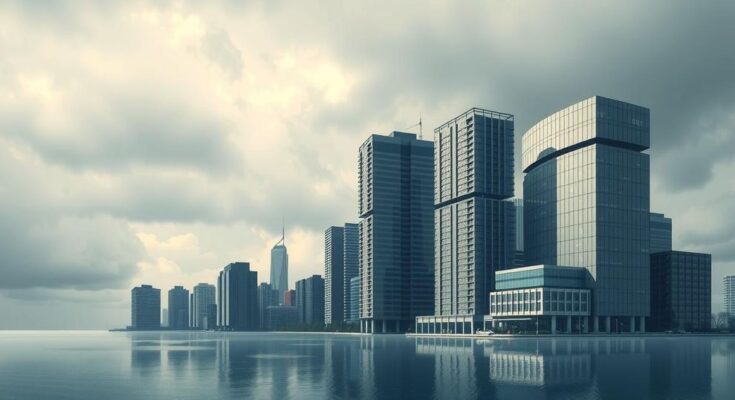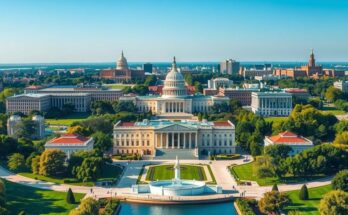South Africa’s economy grew by a mere 0.6% in 2024, the slowest rate since the pandemic. Contributing factors include logistical challenges, decreased consumer spending, drought, and low investment. Only three out of ten sectors saw growth, while agriculture and trade suffered declines. A modest recovery is anticipated for 2025, driven by rising consumption and private investment.
In 2024, South Africa’s economy recorded its slowest growth in four years, with an expansion of only 0.6%, down from 0.7% in 2023, as reported by Statistics South Africa. Factors contributing to this sluggish performance included logistical challenges, weak consumer spending, adverse weather conditions like drought, and insufficient fixed investment. This marked the lowest growth rate since the onset of the COVID-19 pandemic in 2020, which severely disrupted economic activity and trade.
In the GDP figures, only three out of ten economic sectors managed to contribute positively to growth. The finance sector expanded by 3.5%, personal services by 1.7%, and electricity and water services also by 3.5%. The latter’s improvement was largely attributed to enhanced performance by Eskom Holdings SOC Ltd., particularly in the final quarter of 2024 following a period of significant power outages. Conversely, agriculture and trade experienced declines, shrinking by 8% and 1.4%, respectively, with gross fixed capital formation also dropping by 3.7%, its worst outcome since the pandemic started.
Bloomberg Economics suggests that growth in South Africa is likely to gain momentum in 2025, primarily driven by an increase in household consumption. The anticipated rise in demand is expected to encourage greater investment and enhance industrial activity, buoyed by ongoing reforms in the energy and rail sectors.
Despite a challenging year, the fourth quarter of 2024 showed signs of recovery, with a GDP growth of 0.6% compared to the previous quarter, which suffered a contraction of 0.1%. This improvement fell short of economists’ expectations, as it was below the 0.8% median estimate. Positive contributions in the fourth quarter came mainly from agriculture, which surged by 17.2%, and finance, which grew by 1.1%.
Household consumption expenditure, accounting for approximately two-thirds of GDP, also increased by 1%, aided by factors like low inflation and cuts in interest rates. Additionally, the introduction of a new pension system allowing early access to savings likely boosted consumer spending.
The recent drop in interest rates and the implementation of two-pot funds contributed positively to household expenditure towards the end of 2024, according to Bokang Vumbukani-Lepolesa, chief director for national accounts at Stats SA.
Looking ahead, economists anticipate that the growth momentum will persist into 2025, especially after a further quarter-point interest rate cut in January. However, a separate Bloomberg survey predicts only a modest 1.7% economic expansion this year. This growth rate, while an improvement, remains insufficient to address the high unemployment and poverty levels that are among the world’s most severe.
In summary, South Africa’s economy faced significant challenges in 2024, reflecting its slowest growth rate since the pandemic. Despite marginal improvements in the fourth quarter and potential for growth in 2025, the economic recovery appears fragile, hindered by high unemployment and structural difficulties. Policymakers will need to implement effective strategies to stimulate sustainable economic development moving forward.
Original Source: financialpost.com




